Waterfront renewal a shared story
between London and Shanghai
The second season of “Our Water: Flowing from Shanghai — Intercultural Dialogues Among World Cities” opened in London this month, bringing together waterfront cities for deeper exchange and collaboration.
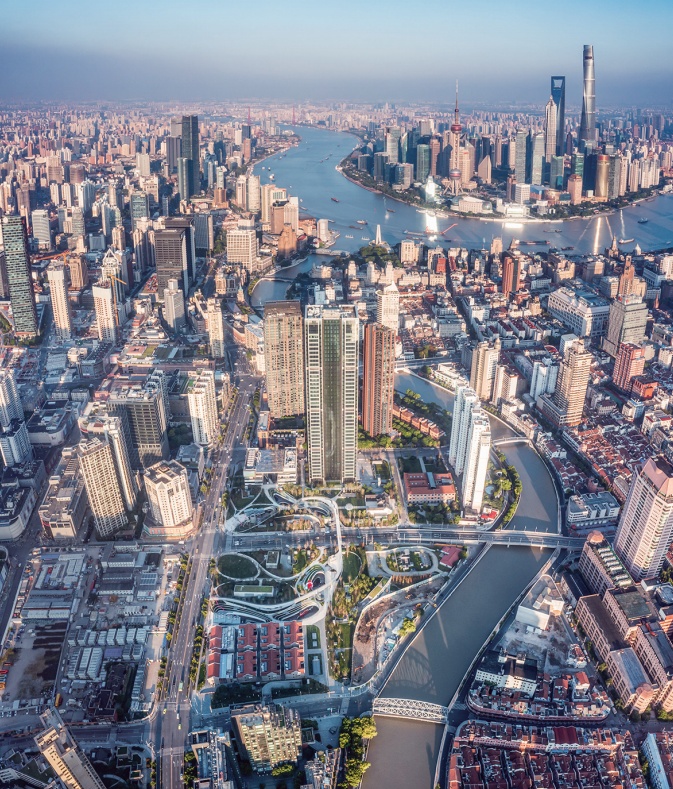
Following the debut season’s dialogue between Shanghai’s Suzhou Creek and Paris’s Seine, this year’s initiative has set sail again — this time docking by the Thames in London and the River Cam in Cambridge. Discussions center on creative industries, sustainable and zero-carbon waterfront development, and global partnerships.
The opening ceremony was held alongside the London Forum at Whitehall Place on June 10, the International Day for Dialogue Among Civilizations. At the event, London Deputy Mayor Howard Dawber, Liverpool Cabinet Member Nick Small and Jing’an District Deputy Director Yang Yi jointly released the “World-Class Waterfront Development Initiative.”
The initiative calls for closer China-UK collaboration to create sustainable, resilient and inclusive waterfronts, transforming them into dynamic urban ecosystems that blend ecology, economy and culture aligned with the UN’s Sustainable Development Goals.
Waterfront renewal is a shared story. London aims to make the Thames swimmable by 2034. Shanghai’s Suzhou Creek — once heavily polluted — has undergone decades of restoration, reconnecting 42 kilometers of downtown riverfront. The 6.3-kilometer Jing’an section, known as Suhewan or Suhe Bay, has emerged as a key urban gathering spot, where paddleboarding and rowing now animate historic banks — much like Liverpool’s Dragon Boat Race.
To deepen the cooperation, the initiative encourages tighter networks between waterfront districts and promotes joint activities in commerce, finance, culture, tourism and exhibitions.

The goal: create places that are not only liveable, but globally connected.
Suhewan’s own transformation has made it a magnet for international business districts. In April 2024, it co-hosted the inaugural season of Our Water with Paris, linking up with La Défense. That October, the Global Business District Innovation Club (GBD Club) convened its summit in Suhewan, drawing participants from cities including Chicago, Casablanca and Frankfurt.
Michael Edwards, President and CEO of the Chicago Loop Alliance, called the river-based model of dialogue “inspiring,” and expressed hope to join future editions of Our Water to exchange insight on business district development along urban rivers.
On June 11, Westminster College in Cambridge hosted “Forging Global Synergy: Cambridge Waterside Salon,” a highlight of the “Jing’an Moments Initiative.” The event gathered Cambridge-based academic and industry leaders, representatives of Chinese multinationals and Jing’an service institutions to explore innovation-driven collaboration.
At the event, Jing’an named its first “Global Innovation Ecosystem Partners”: Bank of China London Branch and the Cambridge University Chinese Alumni Association. The partnership aims to mobilize global innovation networks, activate local platforms and accelerate cross-border resource flows.
Suhewan has fast become a hub of innovation. AstraZeneca’s China R&D hub and iCampus are now based there, driving advances in medical AI and global research partnerships. Beauty giant Yatsen, the parent company of Perfect Diary, also chose Suhewan for its first global R&D center, committing 3 percent of annual revenue to fuel its pipeline.
Professional services are rising in tandem. In finance, institutions like Bank of China’s London Branch help build cross-border channels. In legal services, firms such as Grandall Law and Han Kun have anchored major international deals.
Jing’an District has completed its urban renewal target under the 14th Five-Year Plan (2021–2025) ahead of schedule, with two long-anticipated redevelopment projects officially breaking ground.
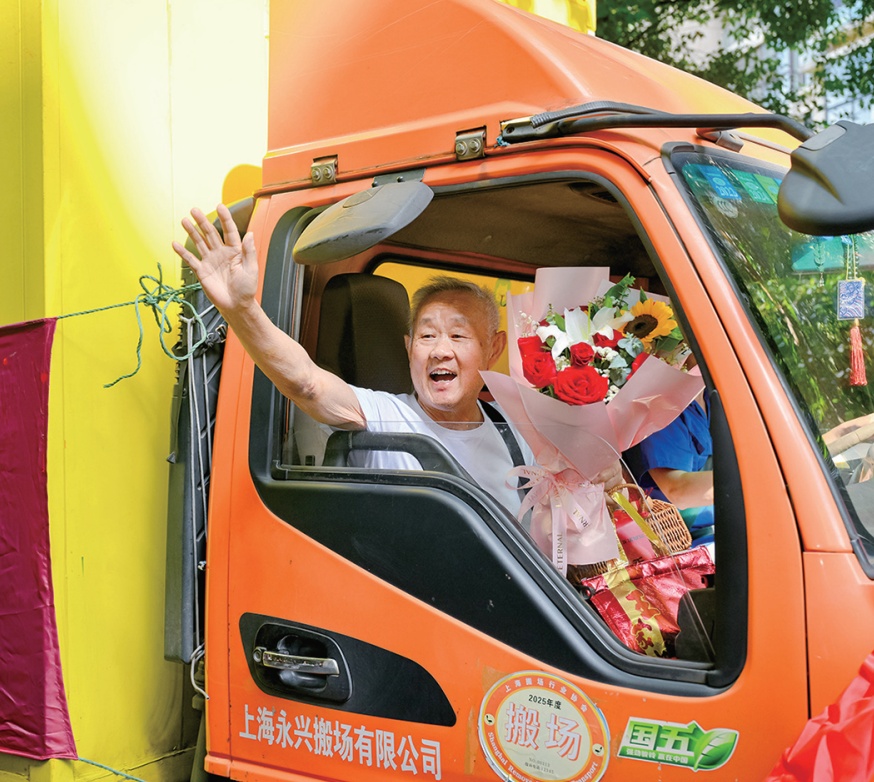
In the Baoshan Road Subdistrict, transformation is underway for 180 households living in aging buildings constructed with thin prefabricated panels in the 1960s and 70s. At the intersection of Baoshan and Dongbaoxing roads, the 6,000-square-meter site has long suffered from structural decay: leaking roofs, clogged drains and outdated wiring. With no private kitchens or bathrooms, daily life was cramped and inconvenient.
On May 30, the project reached a 95-percent signing rate, the threshold required to proceed. Under the plan, two new floors will be added on top of the existing buildings, expanding the total floor area to about 8,000 square meters. Each unit will be upgraded with private kitchens, bathrooms and elevators, bringing long-overdue comfort and modern amenities to residents.
“We’ve lived here for more than 50 years across three generations,” said a resident surnamed Chen. “Now we’ll have our own kitchen, our own bathroom and an elevator. At our age, stairs are a challenge. I’m so happy and can’t wait to move back.”
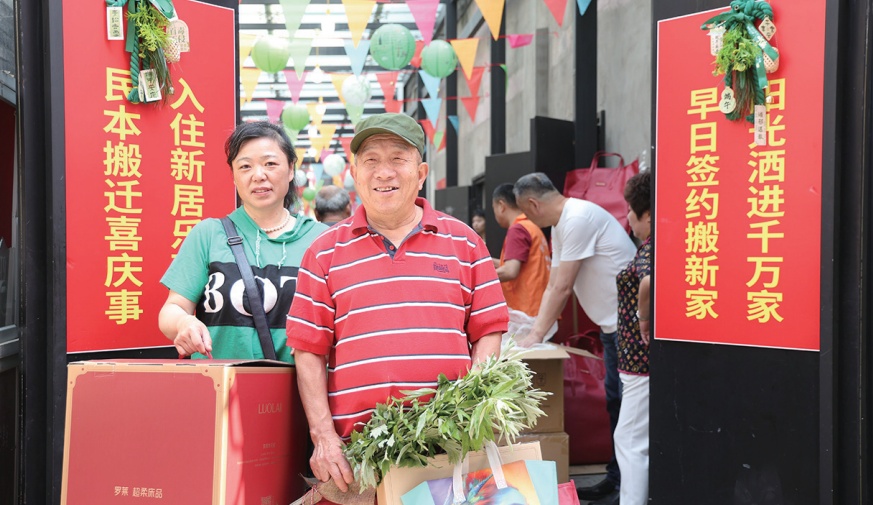
Her neighbor, surnamed Shan, added: “Three families shared one bathroom — it wasn’t easy. After so many years, this is a moment of real joy.”
On the same day, a major project in the Jiangning Road Subdistrict reached a 90-percent signing rate, clearing the way for its launch. The redevelopment targets old houses built in the 1920s and 30s along Haifang, Xinfeng and Xikang roads. The site spans 5,816 square meters and has 1,617 registered residents.
“Our home is small, crowded and sweltering in the summer,” said one. “Rain leaks in during typhoon season, and we had no private bathrooms. With this renewal, we can finally look forward to better days.”
To mark the occasion, residents received symbolic gift bags and bundles of mugwort, a token of protection and blessings.
Relocation began on June 16. As residents move into new housing, their former houses will be transformed as part of Jing’an’s broader urban renewal landscape.

Jing’an, the first Shanghai district to pilot community-based "Baby Houses" for toddlers, has rolled out an ambitious "Baby House 4.0" upgrade as part of its "2025–2027 Early Childhood Care Action Plan."
Issued by the district’s education and health authorities, the plan outlines six major initiatives aimed at tackling the childcare challenges families face. The initiatives focus on building an integrated "care-education-health" service system with professional support at its core.
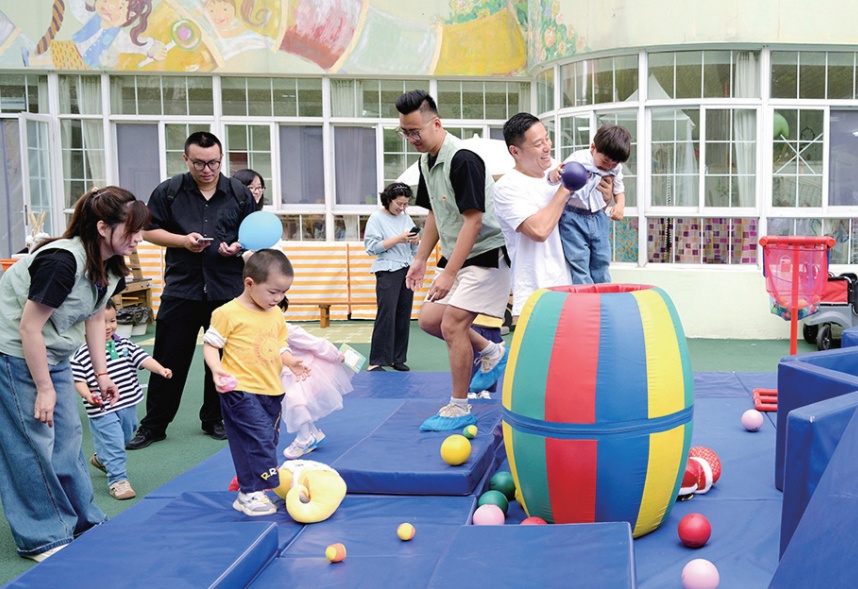
When Jing’an launched the first "Baby House" in early 2022, it was designed to meet the urgent short-term care needs of working parents, providing a safe place for toddlers aged 1 to 3 for one or two hours while parents were busy elsewhere.
However, follow-up research revealed that families’ needs were evolving. "As parents joined 'Baby House' activities, they began asking for more than just basic care," said Yu Wenjun, Party secretary of the Working Committee of Jing’an Education Bureau. "They wanted structured programs, expert guidance, and more holistic support — prompting a shift from 'Baby House 1.0' to the more advanced 4.0 model."
The new version emphasizes professional training and personalized services. Moving beyond standardized coverage, "Baby House 4.0" aims to deliver tailored early education and integrate caregiving with scientific parenting methods. Infants and toddlers will receive developmental stimulation through play-based learning, all within a 15-minute walk from home — creating what officials call a "15-minute childcare circle."
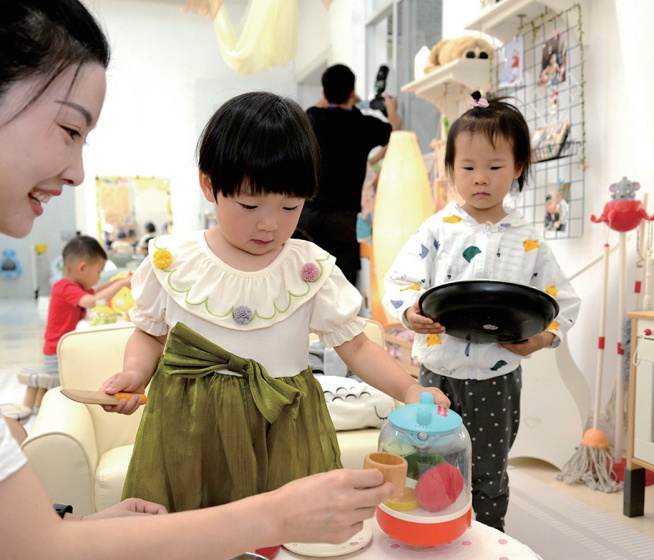
Jing’an is also promoting integrated childcare-kindergarten models, addressing growing demand for full-day care for children aged 2 to 3. Starting this September, all public and private kindergartens in Jing’an will offer toddler classes for such children, providing over 3,000 care slots, and launching pilot programs for those under 2.
"Our goal is to make Jing’an one of the most child-friendly places in the city — not just supportive of childbirth, but of childrearing too," said Yu. The district also plans to extend services into office buildings in commercial areas such as Jing’an Temple and Suhewan to better serve working parents.
Jing’an has reaffirmed its rise as a global fashion powerhouse with the 2025 China Annual Trends Summit in full swing this month.
A highlight came on June 11 during the high-profile "Jing’an Brand Night," when the district signed major deals to supercharge its fashion ecosystem. Shanghai Jing’an Real Estate Group partnered with international leaders Informa Markets, IGI and SF Express to build a seamless pipeline for fashion brands, covering everything from R&D and design to manufacturing and global marketing.



Jing’an also joined forces with the Italy China Fashion Council and Business France to further integrate global expertise into its growing fashion value chain.
To spotlight its ambitions, Jing’an unveiled a list of "Fashion Culture Landmarks," including Zhangyuan Garden, Yuyuan Road, Jing’an Temple, Tianhou Palace, Suhewan, Ju Fu Chang (Julu Road-Fumin Road-Changle Road) and Jing’an Joy City. These sites will serve as magnets for top talent and resources, advancing the district’s mission to elevate Chinese design on the world stage.
Coinciding with the summit, the inaugural Jing’an Fashion Culture Week ran from June 7-21 at Zhangyuan Garden, turning the historic shikumen stone-gate compound into a living runway.
From June 7-8, two runway shows bridged traditional and contemporary Chinese design. The Haute Couture Show, alongside the Haipai Qipao Festival, traced a century of qipao evolution, highlighting the Longfeng qipao technique — a national intangible cultural heritage — and its modern reinterpretations. Renowned Chinese designers showcased collections blending local craftsmanship with international fashion codes.
On June 8, emerging talent from Donghua University shared the spotlight with established designers exploring sustainability and tech-enhanced textiles, offering a glimpse into China’s fashion future.
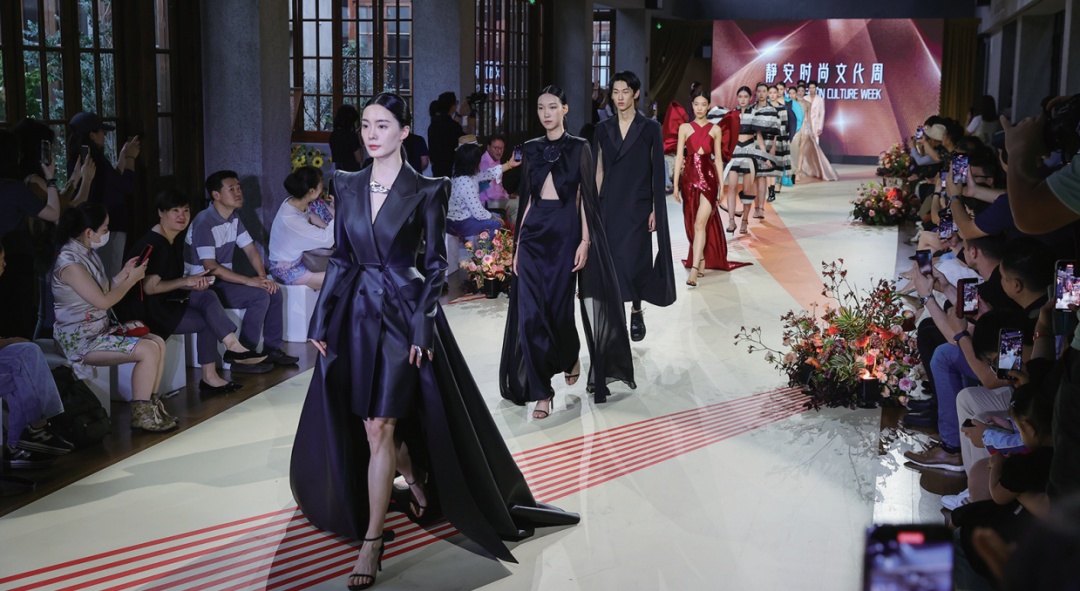
Beyond the runway, the W6 building at Zhangyuan hosted a limited-time fashion-art space from June 7-21. This exhibit merged retail and art, inviting visitors to discover new Chinese design voices and shop curated collections in a unique gallery-store experience.
On June 11–12, the W12 Plaza presented a fashion image exhibition with the Chinese editions of "Man About Town" and "Wonderland." Featuring six leading Chinese photographers, the exhibit fused fashion, cultural heritage and human-centered storytelling.
Meanwhile, from June 12-20, Business France’s "L’Excellence française" salon at Zhangyuan’s bonded warehouse is showcasing refined French lifestyle and jewelry brands, including the China debuts of Nosjean Joaillerie and Qitteri Paris, along with a special presentation by legendary crystal house Lalique — highlighting Jing’an’s growing role as a nexus for global style and trade.
Though Jing’an covers just 0.4 percent of Shanghai’s land, it contributes an impressive 12 percent of the city’s total fashion industry added value. Its deep commercial roots and mature fashion ecosystem have made it a top choice for global brands entering the Chinese market.
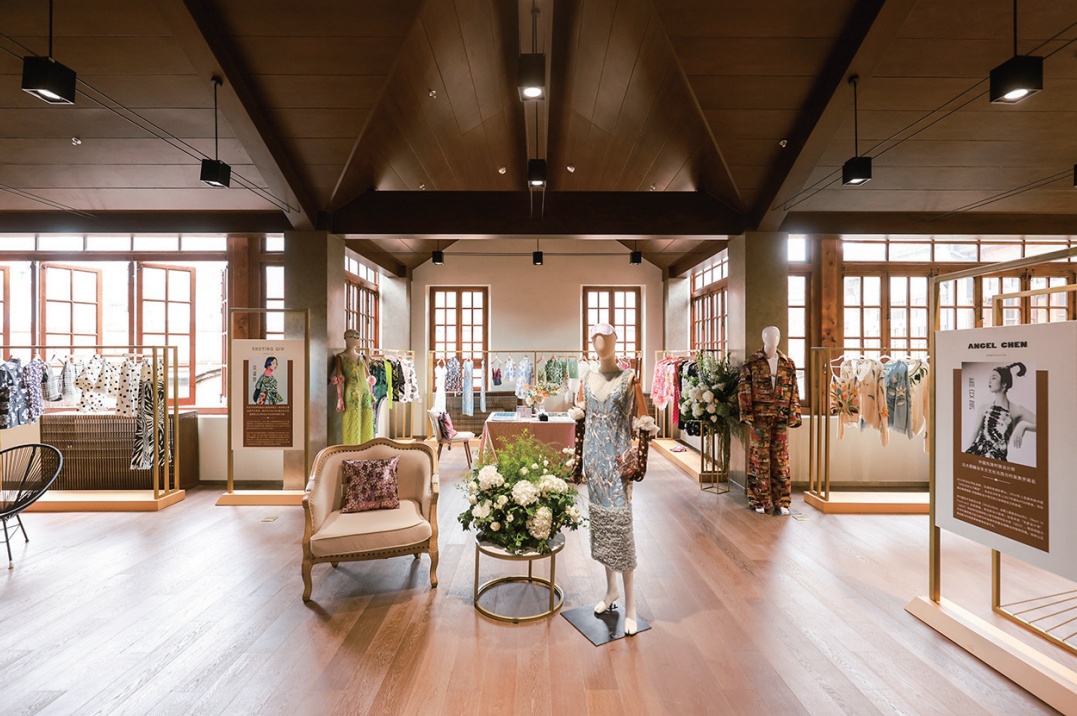
The bustling Nanjing Road W. commercial zone is home to over 2,000 brands, more than 70 percent international, with all three major global luxury groups and over 90 percent of top-tier luxury brands represented.
As a front-runner in Shanghai’s booming "debut economy," the district held over 100 major debut events in 2024 alone. Throughout the year, Jing’an welcomed 234 new first stores, including six global debuts and three Asian premieres. Momentum continues in 2025, with 32 new first stores opening in the first two months alone, maintaining its lead in both volume and quality across the city.





